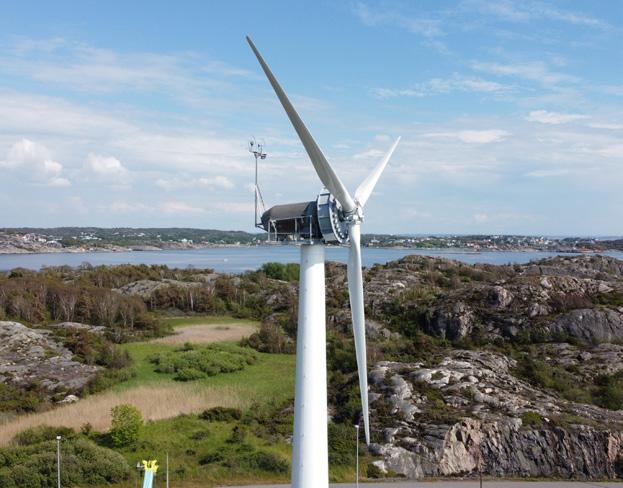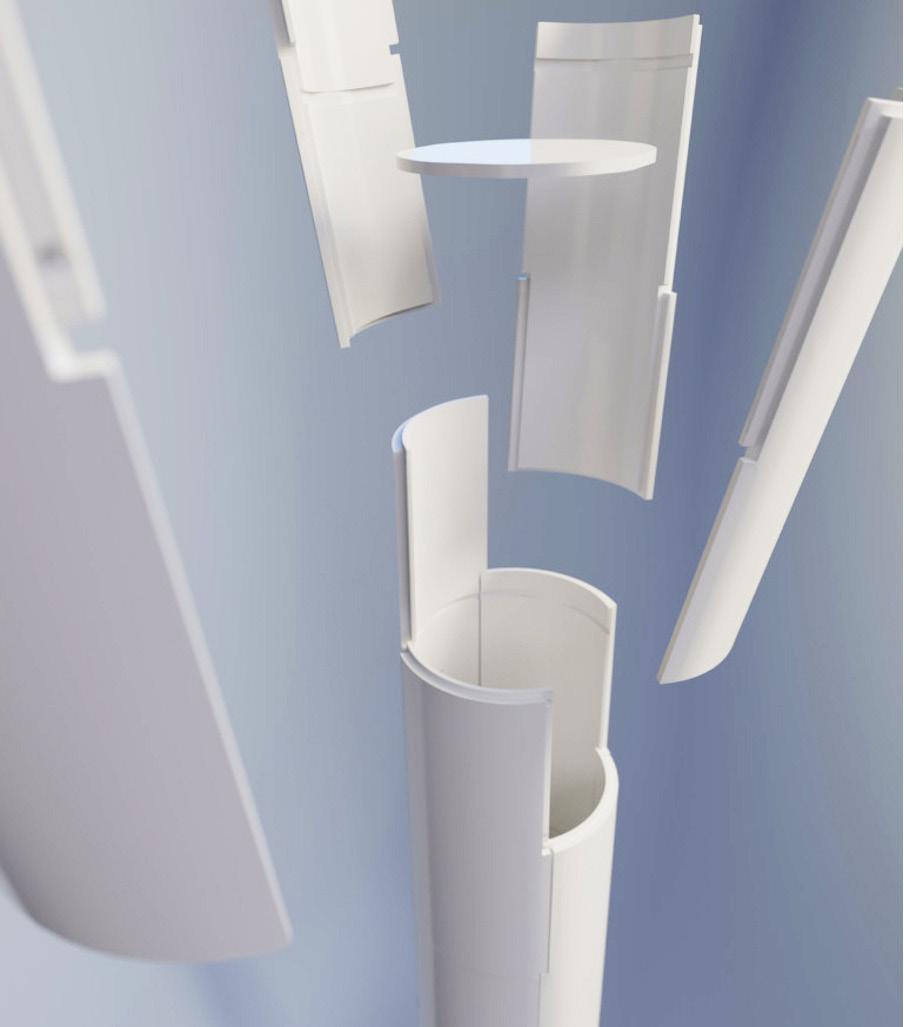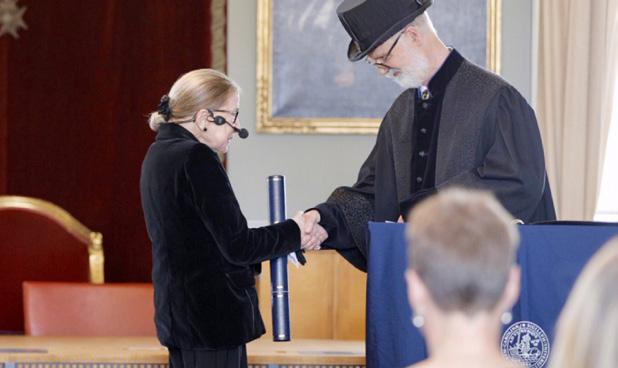
5 minute read
Business
Business News[ ] Electricity Divide and Divisive Petroleum
Preem drops expansion plan
In the September issue of Swedish Press (page 6) we reported on Swedish petroleum giant Preem’s intention to expand its refinery in Lysekil near Gothenburg. The expansion would have created many new jobs for the benefit of the Lysekil community. According to Prime Minister Löfven, it would also have discharged another 1 million tons of harmful CO2 into the atmosphere, making Preem the biggest emitter of the climate-destroying gas in Sweden. The expansion plan proved highly divisive, with the city authorities welcoming the prospective boost to the local economy while ecologists staged massive protests to foil the plan. The division ran so deep that it threatened to derail the present Social
A Swedish North-south Divide
By Bengt Palmgren, Energy Entrepreneur
Arecent conference arranged by the leading Swedish industrial magazine Dagens Industri highlighted the problem that, from time to time, southern Sweden suffers power shortages caused, among other things, by an early dismantling of functioning nuclear power. Most of the electricity production takes place in northern Sweden. Lack of power line capacity from northern to southern Sweden has accentuated the power shortage. The shortage has led to unplanned procurement of nuclear-generated electricity from the Ringhals nuclear power station and the need to use fossil-fuelled power plants to satisfy peak demand. The cost to taxpayers Democrat government, leading to the possibility of snap elections.
To the government’s relief, Preem announced on 28 September that it was shelving the expansion plan. The company’s CEO denied that the protests had been a factor in the decision-making. Instead, he blamed the cancellation on COVID-19 and the attendant drop in worldwide fuel consumption which made the proposed expansion no longer commercially viable. Preem will now focus on developing fossil-free fuel alternatives at its existing Lysekil plant.
Housing market booming
As the coronavirus heads for a second peak around the world, one would have expected the property market to stall like so many other businesses. Paradoxically, the opposite
Power Production in Sweden amounts to around 300 million SEK ($34m).
The power line that runs from Central Sweden to Skåne, which Svenska Kraftnät procured for 7 billion SEK ($790m), has not yet been brought into operation due to technical problems. Unfortunately, appears to be true in many countries, Sweden included. As working from home becomes commonplace in both the near term and long term, Swedes are rushing to buy more comfortable and spacious accommodation. Since there is now less of a need to live close to the place of work, buyers are motivated to move to more rural communities where house prices are more affordable and the quality of life is better than in the big cities.
Equally surprising, foreigners are also rushing to invest in Swedish real estate. The reasons appear to be that a great deal of idle foreign investment capital is looking for a safe home in these turbulent times, and that the Swedish socio-economic environment is seen as meeting expected stability
Page 82 23 September 2020 Di Framtidens Elmarknad 2020
and profitability criteria.
the electricity shortage threatens the business community in southern Sweden, and now several business leaders are sounding the alarm that investments are under threat. For example, Sweden’s leading bakery Pågens Bröd has scrapped its planned investments in Malmö.
Trapping Rather Than Releasing Harmful CO2
By Peter Berlin
Wind turbines are nothing new. Some people love these electricity-generating behemoths because they help to save our climate. Others hate them because they are an eyesore and kill birds. A few even question whether they actually do help save the climate, since it is alleged that the process of making them produces enough greenhouse gas to negate their climate-saving advantage.
An eyesore – really? So how come people travel all the way to Holland to admire their comparatively clumsy and inefficient old windmills? As for slaughtered birds, be aware that, in the United States alone, cats kill 500,000 birds every year for every bird that is guillotined by the sharp blades of wind turbines.
Wind turbine towers can be up to 150 m (450 ft) high and are made of steel or reinforced concrete. Significant levels of CO2 are indeed produced during the manufacturing process which detracts somewhat from the claimed ecological benefit of the turbines.


Modvion’s patented module system. All Photos: Modvion

Enter the Swedish company Modvion – a Swedish engineering and industrial design company developing modular designs in renewable engineered wood to simplify and improve construction logistics. Modvion has developed a modular wind turbine prototype with a tower made of wood. As wind towers rise above 100 meters (300 ft) in height, transportation poses considerable problems given that base diameters for 100+ meter towers exceed 4.3 meters (13 ft), the limit for road transport width in most parts of the USA and the EU. The modularity of the Modvion design makes the wind turbines easier to transport from the manufacturing plant to their final destination.
Trees capture CO2 from the atmosphere in order to grow. Making the wind turbine towers out of wood traps the CO2 that would otherwise be released into the atmosphere if the wood were burned or turned into pulp and paper. Laminated wood is stronger than steel for a given weight. The manufacture of the wood modules produces 25 percent less greenhouse gas than equivalent steel or concrete structures, and they are lighter and cheaper to make. So what is there not to like about Modvion’s innovative approach?
The Modvion wind turbine prototype is 30 m (90 ft) tall and has been installed on an island outside of Gothenburg. Full-scale commercial production will begin in 2021, boosted by a multi-million Euro grant from the European Union.
Of course, wind turbines can only generate electricity in the presence of wind, just as underwater generators depend on the presence of currents or waves, and solar panels rely on the presence of sunlight. This unpredictability is a common weakness in renewable energy generators.
To achieve the same level of power supply continuity the way fossil-fuelled and nuclear power plants can, a method must be found to overcome the outages by storing and releasing the output from renewable energy generators according to need. This is where batteries come in. At present, the cost, weight and efficiency of batteries are not up to the task on the kind of scale needed to sustain a whole country, but another Swedish company – Northvolt – is in the process of solving the problem (see page 10 in the March 2018 issue of Swedish Press).
The renewable energy sector is hungry for innovation. With this appetite comes profitability and job opportunities on an ever-increasing scale, and companies like Modvion embody the trend. See also www. modion.com.










